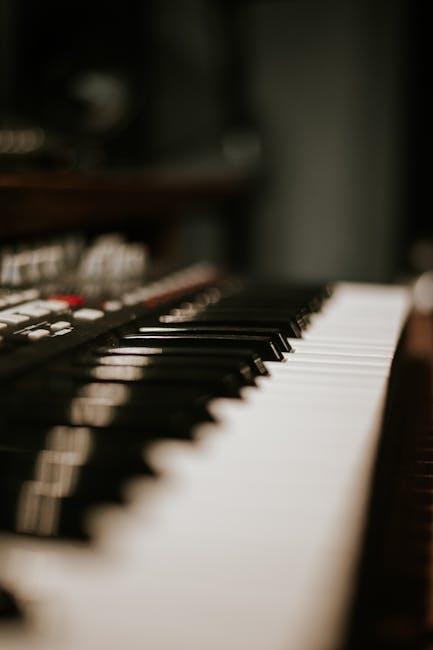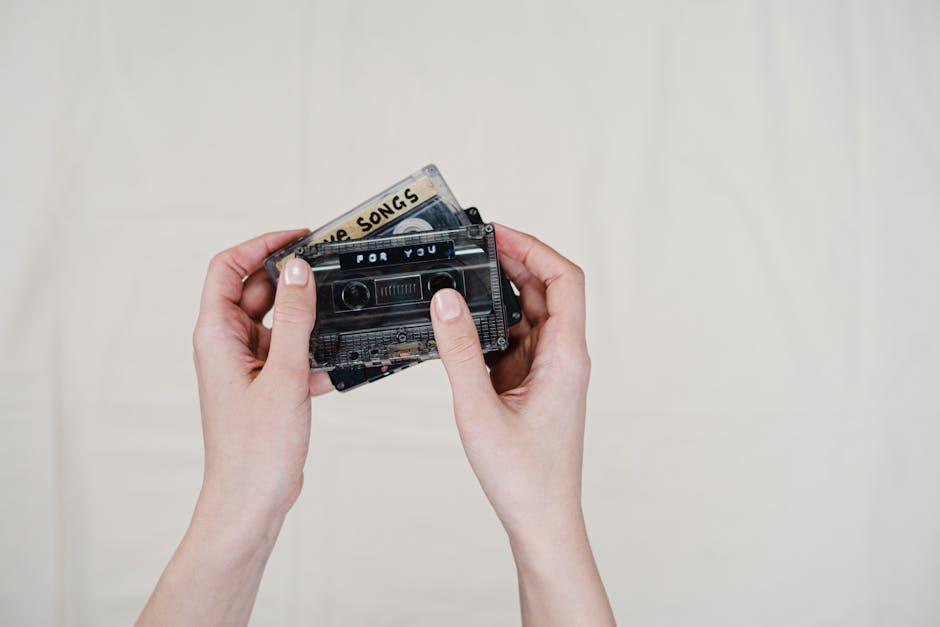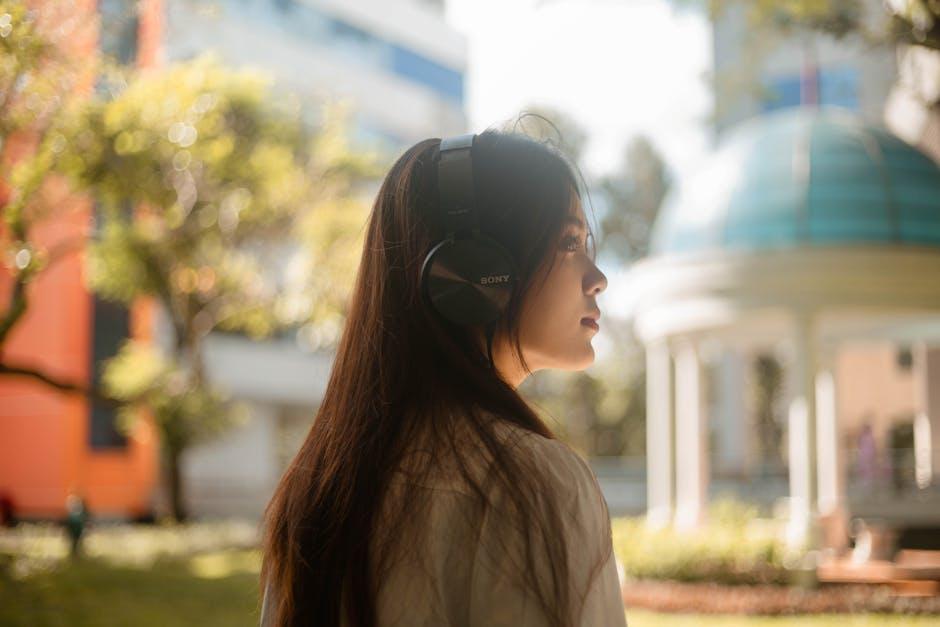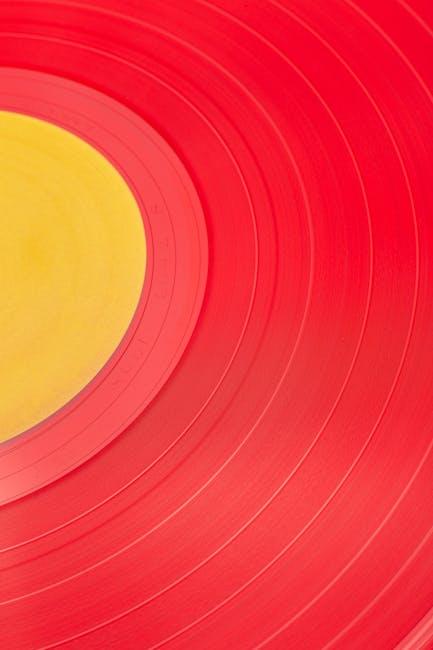In the quiet hum of everyday life, a subtle force often lies waiting to be unlocked—an invisible spark that ignites the mind’s most imaginative corners. Music, with its intricate melodies and rhythms, has long been a companion to creators, thinkers, and innovators alike. But beyond mere background noise, it holds the power to elevate creativity, guiding thoughts into uncharted realms. This article explores how the right soundtrack can become a catalyst for inspiration, transforming the creative process from a solitary endeavor into a dynamic journey fueled by sound.
Table of Contents
- The Science Behind Music and Creative Thinking
- Genres That Inspire Innovation and Originality
- How Tempo and Rhythm Influence Cognitive Flow
- Crafting Personalized Playlists for Maximum Creativity
- Incorporating Music into Your Creative Routine
- Tips for Using Music Mindfully to Avoid Distraction
- Q&A
- The Way Forward

The Science Behind Music and Creative Thinking
Scientific studies reveal that music stimulates various regions of the brain, enhancing neural connectivity and fostering a fertile ground for imaginative thought. When melodies flow, the auditory cortex engages, while simultaneously, the prefrontal cortex – responsible for complex decision-making and creative planning – lights up with activity. This harmonious interaction helps break down mental barriers, allowing ideas to emerge fluidly. A key element is rhythm, which can synchronize brain waves to optimal states for creativity, commonly referred to as the “alpha brainwave state”. This state is linked to relaxed focus, where the mind is alert yet calm, an ideal condition for innovative thinking.
The impact of music on creativity can vary widely, but certain types and tempos are known to elevate creative output. Here’s a quick overview of how different musical elements influence creative thinking:
- Classical compositions often enhance concentration and cognitive performance by providing a structured yet soothing backdrop.
- Ambient sounds promote deep relaxation and reduce stress, freeing up mental resources for novel idea generation.
- Upbeat tempos can energize the brain, accelerating associative thinking and boosting motivation for creative tasks.
| Music Type | Effect on Creativity | Optimal Use |
|---|---|---|
| Baroque | Improves focus and memory retention | Studying, brainstorming |
| Jazz | Encourages spontaneous idea generation | Creative writing, design |
| Nature Sounds | Reduces anxiety, opens imagination | Meditation, problem-solving |

Genres That Inspire Innovation and Originality
Exploring cutting-edge sounds often means diving into genres that push traditional boundaries. Ambient music, with its ethereal textures and evolving soundscapes, creates an immersive atmosphere that encourages the brain to wander into uncharted creative territories. Similarly, experimental jazz with its spontaneous rhythms and unconventional melodies sparks fresh ideas by blending unpredictability with emotional depth, making it a playground for innovative thinking.
Genres such as electronic fusion and neo-classical also serve as fertile ground for originality. These styles intertwine different musical cultures and eras, exemplifying how mixing diverse elements can produce groundbreaking works. Consider this quick breakdown of how select genres impact creativity:
| Genre | Creative Trigger | Typical Instrumentation |
|---|---|---|
| Ambient | Spatial awareness & mood enhancement | Synth pads, nature sounds |
| Experimental Jazz | Spontaneity & improvisation | Saxophone, double bass, drums |
| Electronic Fusion | Tech-driven innovation & genre blending | Drum machines, samplers, electric guitar |
| Neo-Classical | Emotional depth & modern reinterpretation | Piano, strings, electronic elements |

How Tempo and Rhythm Influence Cognitive Flow
Tempo and rhythm serve as more than just musical elements; they are the unseen architects of our mental landscape. A brisk tempo can quicken the heartbeat and stimulate alertness, pulling the mind into a heightened state of focus, ideal for idea generation. Conversely, slower rhythms often encourage deeper reflection, allowing thoughts to swirl softly and encouraging novel connections to form. By consciously selecting music with the right pulse, individuals can harness these auditory cues to shift their cognitive flow, switching between energetic bursts of creativity and calm, immersive thought.
These effects are magnified when tempo and rhythm align with the task at hand. Consider this simple framework:
| Task Type | Recommended Tempo | Rhythmic Qualities |
|---|---|---|
| Brainstorming | 120-140 BPM | Consistent, driving beat |
| Deep Work | 60-80 BPM | Flowing, gentle pulse |
| Creative Writing | 80-100 BPM | Syncopated, varied rhythm |
- Higher tempo: Fuels motivation and quick decision-making.
- Lower tempo: Supports sustained concentration and exploration.
- Rhythm complexity: Engages different neural pathways, inspiring unique thought patterns.

Crafting Personalized Playlists for Maximum Creativity
Unlock your creative potential by curating soundscapes that resonate with your unique workflow. Begin by identifying the genres and instruments that stimulate your imagination—be it the soothing hum of ambient electronic, the intricate patterns of jazz improvisation, or the uplifting energy of indie folk. Personalization is key; what fuels one person’s muse might be a distraction to another. Use this awareness to build a playlist that aligns with the rhythm of your ideas, whether you prefer steady beats to maintain focus or fluid melodies to inspire freeform thinking.
To enhance your playlist’s impact, incorporate tracks with these qualities:
- Consistent tempo: Avoid sudden shifts that can jar creative flow.
- Instrumental clarity: Minimize lyrics to prevent cognitive overload.
- Emotional resonance: Choose music that evokes feelings supportive of your task, from calm to invigorated.
| Creative Mood | Recommended Music Style |
|---|---|
| Focused Problem Solving | Minimalist Ambient |
| Imaginative Brainstorming | Instrumental Jazz |
| Energetic Output | Upbeat Indie |

Incorporating Music into Your Creative Routine
Integrating music into your daily creative workflow can awaken new pathways in your brain, making room for fresh ideas and innovative thinking. Experiment with different genres to discover which tunes spark your imagination the most—whether it’s classical for deep focus, jazz for spontaneous bursts of inspiration, or ambient sounds to maintain a calm, meditative space. Make it a habit to create personalized playlists that resonate with your current project or mood, allowing music to become a seamless part of your creative environment.
Consider the following simple strategies to weave music effortlessly into your routine:
- Set the Scene: Use music to signal the start and end of dedicated creative sessions, creating a mental cue that primes your brain for focus.
- Match the Beat to Your Task: Choose upbeat rhythms for brainstorming, and softer melodies for tasks requiring concentration.
- Utilize Breaks: Play inspiring music during short breaks to recharge without losing momentum.
| Music Type | Creative Benefit | Best Time to Use |
|---|---|---|
| Classical | Enhances concentration | During intense writing or coding |
| Jazz | Stimulates creative thinking | Brainstorming and idea generation |
| Ambient | Calms the mind | Planning and reflection |
| Electronic | Boosts energy levels | Active work sessions |

Tips for Using Music Mindfully to Avoid Distraction
It’s all about balance when integrating tunes into your creative flow. Start by selecting music that complements your task—instrumental or ambient tracks often work best to maintain focus without pulling your attention away. Experiment with volume levels; sometimes a softer background hum can inspire without overpowering your thoughts. Consider setting timed listening sessions, allowing music to recharge your mind in intervals rather than playing continuously.
- Choose familiar tracks: surprises can distract you.
- Keep lyrics minimal: words might interfere with verbal tasks.
- Use playlists: avoid pausing to select songs frequently.
- Match tempo with task intensity: slower beats for deep work, livelier for brainstorming.
Mindfully tuning into music also means recognizing when it becomes a barrier. If you notice your creativity stalling or you’re replaying a single line instead of ideas, take a musical pause. Your brain might be signaling the need for silence or another form of sensory stimulus. Alternating between quiet and curated sounds can train your focus muscles, ensuring music remains a catalyst, not a crutch.
| Type of Music | Best For | Potential Distraction |
|---|---|---|
| Classical | Deep concentration | Complex movements in pieces |
| Ambient | Flow states | Unfamiliar soundscapes |
| Lo-fi beats | Relaxed creativity | Sudden changes in rhythm |
| Nature sounds | Stress relief | Repetitive loops |
Q&A
Q&A:
Q: How does music influence creativity?
A: Music can act as a catalyst for creativity by stimulating brain activity, enhancing mood, and reducing stress. It often helps shift perspectives, encouraging novel ideas and unorthodox thinking.
Q: Are there specific types of music that are best for boosting creativity?
A: Yes, though it varies by individual. Many find instrumental, ambient, or classical music effective because these genres lack distracting lyrics and maintain a steady rhythm that fosters concentration and imaginative flow.
Q: Can music ever hinder creativity instead of helping it?
A: Absolutely. Music that is too loud, complex, or lyrically engaging may divert attention away from creative tasks. The key is choosing music that complements your workflow without overpowering your focus.
Q: Does listening to music while brainstorming improve idea generation?
A: For many, yes. Music can create a relaxed mental state conducive to free thinking. It can also break mental blocks by introducing an emotional or rhythmic stimulus that sparks fresh connections.
Q: Is silence sometimes better than music for creative work?
A: It depends on personal preference and the nature of the creative work. Some thinkers require silence to fully engage their imagination, while others thrive in a sonic environment. Experimentation helps determine what works best.
Q: How can one tailor playlists to maximize creative boosts?
A: Start by noting which genres and tempos energize or calm you. Curate playlists with tracks that maintain a consistent mood and avoid abrupt changes. Incorporate breaks for silence or nature sounds if needed.
Q: Can music influence the type or style of creativity you produce?
A: Yes, music’s mood and energy can shape your creative output. Upbeat tunes may inspire dynamic, energetic ideas; mellow melodies might lead to reflective and nuanced creations.
Q: Are there any scientific studies supporting music’s role in creativity?
A: Several studies highlight music’s impact on cognitive function, mood regulation, and neural connectivity—all essential components of creative thought. While research is ongoing, evidence generally supports music as a valuable creative aid.
Q: How can one overcome distractions caused by music during creative endeavors?
A: Choose familiar or repetitive music to minimize attention shifts. Instrumental tracks or white noise can help maintain focus. Adjust volume to a comfortable level where music fades into the background rather than the foreground.
Q: What is the best time to use music for boosting creativity?
A: During the ideation phase, when generating ideas freely, music can be most effective. It’s also useful during routine or repetitive parts of creative work to maintain momentum, though some tasks may benefit from quieter environments.
The Way Forward
As the final notes fade, the connection between music and creativity lingers—a subtle catalyst sparking new ideas and fresh perspectives. Whether you seek a gentle hum to inspire or an energetic rhythm to ignite your imagination, the right soundtrack can transform the creative process into a harmonious journey. So next time your mind feels stuck, let music be the bridge that carries you into uncharted realms of innovation. After all, sometimes the key to unlocking your brightest ideas is just a melody away.

